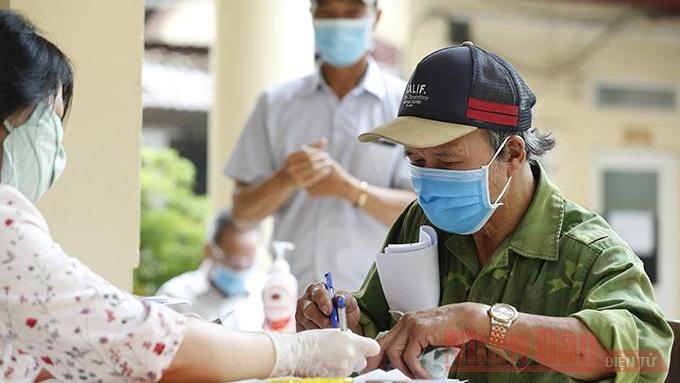
|
2020 was a difficult year for the labour and social security sector due to the negative effects of COVID-19. However, this field has also recorded some outstanding bright spots. |
|
Over VND62 trillion in support of 20 million people affected by COVID-19 On April 9, the Government issued Resolution No. 42/NQ-CP on measures to support people facing difficulties caused by the COVID-19 pandemic. With the spirit of “Not letting anyone be left behind”, about 20 million people belonging to seven groups of beneficiaries will benefit from this support policy, with a budget of more than VND62 trillion. As of December 25, 2020, the support package has disbursed more than VND12.8 trillion to support nearly 13 million people and 30,569 business households. Total funding to support 14.1 million beneficiaries through direct payments or social insurance, unemployment insurance, and loans to compensate for wage termination is VND31.5 trillion. Issuing the 2020 Ordinance on Preferential Treatment for people with meritorious services to the revolution The Ordinance on Concession to people with meritorious services to the revolution was passed by the Standing Committee of the 14th National Assembly and will take effect from July 1, 2021. The ordinance includes seven chapters and 58 articles, supplementing principles of implementing policies and preferential treatment for the group of beneficiaries, as well as standardising the conditions and criteria to consider and recognise them in order to truly honour the deserved subjects. Paying tribute to 300 Vietnamese Heroic Mothers Vietnamese Heroic Mothers attend a gathering in Hanoi. (Photo: NDO/Dang Khoa) For the first time ever, a National Heroic Mothers Meeting was held, with the presence of 300 Vietnamese Heroic Mothers from all around the country. The event took place in Hanoi from July 23 to 25, hosting by various ministries and agencies, including Nhan Dan (People’s) Newspaper. The programme aims to honour the quiet but great sacrifices of Vietnamese Heroic Mothers to the cause of building and defending the Fatherland. Multidimensional poor household rate reduced to 2.75% By the end of 2020, the poverty rate according to the multidimensional poverty line is estimated to have decreased to about 2.75%, down 1% compared to the end of 2019. In particular, for disadvantaged districts, this rate decreased to less than 24%, down by more than 5% compared to 2019. This rapid multidimensional poverty reduction rate has helped Vietnam finish 10 years ahead of its Millennium Development target, being one of 30 countries around the world applying the multi-dimensional poverty line. The results, which have been highly lauded by the international community, can be noted as follow: annual average poverty reduction rate in the past five years was at 1.35%, down from 9.88% in 2015 to 2.75% in 2020. Voluntary social insurance policy continues to make its mark A social insurance official mobilising a local to participate in voluntary social insurance. (Photo: Vietnam Social Security) In 2020, social insurance coverage expanded, with more than 16.1 million people participating, reaching 32.6% of the workforce. By December 31, 2020, the number of people participating in social insurance was estimated at 16,101 million, accounting for about 32.6% of the workforce, an increase of 327,000 compared to 2019. In particular, the number of people participating in voluntary social insurance reached over 1 million, an increase of 494,000, nearly double that of 2019. This number shows the efforts of all sectors despite the context of many difficulties due to the influence of COVID-19. Approximately 2.2% of the workforce are farmers and informal workers participating in voluntary social insurance. This figure has exceeded the target of Resolution 28-NQ/TW set at 1% for this group by the end of 2021 and also nearly five times higher than that of 2015. Vocational education recruits about 2.26 million trainees Estimated enrolment for the whole year in vocational education was about 2.26 million, reaching the set target. Specifically, the figure for college and intermediate level is at 580,000, with primary level and other vocational training programmes at 1.68 million. The sector has supported vocational training for about 1.2 million rural workers. The number of graduates stands at 2.19 million, reaching the set target. The rate of trained labour is expected to reach 64.5% for 2020, with those having diplomas and certificates reaching 24.5%. Source: Nhan Dan Online |


